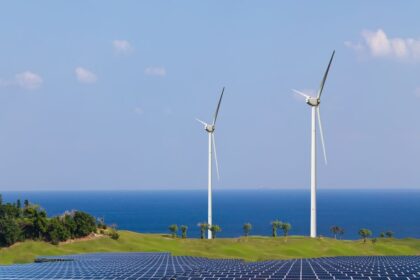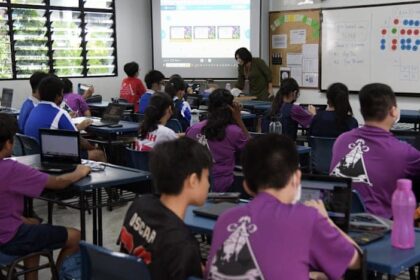Indonesia’s Middle Class: Once the Engine of Growth, Now Under Threat
Indonesia, Southeast Asia’s largest economy, has long been celebrated for its dynamic growth and the rise of a vibrant middle class. In recent years, however, this crucial demographic has been shrinking at an alarming rate. While official statistics show the economy expanding at a respectable pace—5.12 percent growth in the second quarter of 2025, according to the Central Statistics Agency—the number of Indonesians classified as middle class has dropped from over 57 million in 2019 to just under 48 million in 2024. This decline is not just a statistical anomaly; it signals a deeper malaise that threatens the country’s economic future, social stability, and political landscape.
- Indonesia’s Middle Class: Once the Engine of Growth, Now Under Threat
- Who Are Indonesia’s Middle Class—and Why Do They Matter?
- Why Is Indonesia’s Middle Class Shrinking?
- The Human Face of Middle-Class Decline
- Economic Consequences: Slowing Growth and Shifting Consumption
- Policy Responses: What Has Been Done—and What More Is Needed?
- Can Labor-Intensive Industries and Innovation Revitalize the Middle Class?
- Social and Political Implications: Rising Anxiety and the Risk of Instability
- In Summary
Household consumption, which accounts for more than half of Indonesia’s GDP, grew by just under 5 percent—below pre-pandemic levels and insufficient for an economy so reliant on domestic spending. While government policies have cushioned the poorest Indonesians, the middle class has largely been left to fend for itself, squeezed by rising living costs, stagnant wages, and limited social support.
Who Are Indonesia’s Middle Class—and Why Do They Matter?
The middle class in Indonesia is typically defined by the World Bank as those with economic security who can spend on discretionary items beyond basic subsistence. The government classifies middle-class households as those spending between $132 and $643 per month. This group is not only a key driver of consumption—accounting for nearly 40 percent of private spending—but also forms the backbone of the tax base, supports small businesses, and underwrites social cohesion.
Middle-income households are crucial for several reasons:
- They are reliable taxpayers, contributing significantly to state revenues.
- They are borrowers and investors, supporting the financial system.
- They absorb much of the cost of education and healthcare, reducing pressure on public services.
- They support small businesses and local economies through their spending.
- They contribute to social stability and political moderation.
When the middle class thrives, the economy benefits from robust domestic demand, innovation, and a stable investment climate. When it falters, the consequences ripple across all sectors.
Why Is Indonesia’s Middle Class Shrinking?
The decline of Indonesia’s middle class is the result of several interlocking factors, many of which have been exacerbated by the COVID-19 pandemic and subsequent economic shocks.
Pandemic Aftershocks and Labor Market Shifts
The pandemic dealt a severe blow to Indonesia’s formal sector. Millions lost stable jobs as factories closed and businesses downsized. For example, Rahmat Hidayat, a former shoe factory worker in West Java, now earns less than half his previous income selling grilled meatballs on the street. Like many others, he can no longer afford essential healthcare for his family. Such stories are echoed across the country, as layoffs and a lack of new formal job opportunities push many into the informal sector, where wages are lower and benefits minimal.
According to government data, informal sector employment rose from 57 percent to 59 percent between 2018 and 2023. Most new jobs created in recent years have been informal, contributing to the declining purchasing power of the middle class.
Stagnant Wages and Rising Costs
While overall inflation remains manageable at around 2.37 percent, the costs of services vital to the middle class—such as education and healthcare—are rising much faster than wages. Average formal-sector salaries have increased by just 3.8 percent, leaving workers with little real income growth. As a result, more of the middle class’s budget is devoted to food and essentials, with less left for discretionary spending. This shift is a key indicator of economic stress and declining well-being.
Tax Burdens and Policy Uncertainty
Recent tax policy changes have added to the pressure. The government’s attempt to raise the value-added tax (VAT) from 11 to 12 percent was abruptly revised to apply only to luxury goods, creating uncertainty for businesses and investors. While this spared lower-income households from immediate effects, it did little to address the broader inequities facing the middle class. Indonesia’s tax-to-GDP ratio remains low compared to regional peers, limiting the government’s ability to fund critical investments in infrastructure, education, and social protection.
Structural Economic Challenges
Indonesia’s economy has long depended on commodities like nickel, coal, and palm oil. While these sectors attract investment, they have not generated enough well-paid, formal jobs to sustain a growing middle class. The country’s limited focus on manufacturing has hindered its ability to compete with neighbors like Vietnam and Malaysia, which have built robust export-oriented industries. As a result, Indonesia has struggled to capitalize on global shifts in production and investment.
Global Headwinds and External Risks
External risks—including trade wars, conflict in the Middle East, and volatile energy prices—add further uncertainty. While foreign investors remain interested in Indonesia’s market, sustaining confidence requires a large and prosperous consumer base. Without a strong middle class, the country’s appeal as an investment destination may wane.
The Human Face of Middle-Class Decline
Behind the statistics are millions of personal stories. Halimah Nasution and her husband, once comfortable business owners in North Sumatra, lost everything when the pandemic shut down social gatherings and their event supply business collapsed. Now, like many others, they struggle to regain their previous standard of living, having received little government assistance during the crisis.
For families like the Nasutions and the Hidayats, the erosion of middle-class status means more than just economic hardship. It brings anxiety about the future, reduced access to quality education and healthcare, and a sense of being left behind by government policies that focus on the very poor or the very rich.
Recent protests, such as the student-led “Dark Indonesia” (#IndonesiaGelap) movement, have highlighted the growing frustration among the middle class and educated youth. These demonstrations, initially sparked by proposed tuition hikes and scholarship cuts, have expanded to broader demands for better governance, job opportunities, and social protections. The anxiety is palpable, with many young Indonesians considering migration for work or study as a way to escape limited prospects at home.
Economic Consequences: Slowing Growth and Shifting Consumption
The decline of the middle class is already having measurable effects on the broader economy. Consumer spending has slowed, with deflation observed in recent months and major retailers struggling to meet sales targets. The automobile industry, for example, saw a 14 percent drop in car sales in 2024, while fast-food chains like Pizza Hut Indonesia have closed stores and reduced staff in response to weaker demand.
Boy Lukito, CEO of Sarimelati Kencana (which operates Pizza Hut Indonesia), noted a growing trend of cautious spending among the middle class. “Indonesians are becoming more frugal amid economic uncertainty,” he told the Financial Times. Businesses are adapting by offering promotions and diversifying their offerings, but the fundamental challenge remains: middle-class Indonesians are prioritizing saving and essential needs over discretionary spending.
This shift in consumer behavior poses a significant obstacle to the government’s ambitious growth targets. President Prabowo Subianto has set a goal of 8 percent annual GDP growth by 2029 and the creation of 19 million new jobs. However, without addressing the structural issues affecting the middle class—such as the creation of formal, well-paid jobs and better investment in manufacturing—these targets may prove elusive.
Policy Responses: What Has Been Done—and What More Is Needed?
Government measures to date have focused primarily on poverty alleviation, with cash transfers and welfare programs targeting the poorest Indonesians. While these efforts have reduced poverty rates, they have largely bypassed households whose incomes are too high to qualify for assistance but too modest to absorb rising costs. Public spending contracted by as much as 14 percent in the first half of the year, limiting the multiplier effect on job creation and economic recovery.
President Prabowo’s administration has promised continuity in infrastructure investment and welfare transfers for the poor, as well as new initiatives like a $28 billion free meals program for children and expectant mothers. There are also plans to build 3 million homes to create jobs and support the aspiring middle class. However, economists argue that these measures, while helpful, are not enough to address the unique challenges facing the middle class.
Experts have called for a policy reset that treats the middle class as a strategic asset. Proposals include:
- Temporary tax breaks or deductions for education and healthcare expenses
- Targeted energy subsidies or cash support for middle-income households
- Subsidized skills training and stronger protections against job losses
- Investment in labor-intensive, demand-driven industries to create formal, well-paid jobs
- Comprehensive tax reform to broaden the base and improve compliance
Chatib Basri, former finance minister and government advisor, emphasized the importance of focusing on job creation through foreign direct investment, particularly in export-oriented sectors. “Simply offering welfare measures will not be enough,” he said. “We need to create more formal, well-paid jobs and improve the competitiveness of our economy.”
Can Labor-Intensive Industries and Innovation Revitalize the Middle Class?
One promising avenue is the development of labor-intensive, demand-centric industries. Sectors such as agriculture, food processing, textiles, construction, tourism, and information technology have the potential to create millions of jobs and boost domestic demand. For example, agriculture, forestry, and fishing employed over 28 percent of Indonesians aged 15 and above in 2024, while manufacturing contributed more than 18 percent to GDP and employed nearly 14 percent of the workforce.
Jakarta’s provincial government has piloted programs to establish labor-intensive ecosystems, including free nutritious meals, cooperative savings, and microfinance for smallholder farmers. These initiatives aim to stabilize food prices, boost demand, and help vulnerable groups transition into the middle class. Investments in food processing, textile manufacturing, and construction can add value, generate jobs, and improve living standards across regions.
Technology is another emerging frontier. With nearly all Indonesians accessing the internet via mobile phones, there is significant potential for digital entrepreneurship, workforce training, and job creation in software development, IT support, and digital content creation.
However, the World Bank cautions that over-reliance on low-wage, labor-intensive sectors may stagnate the economy and limit skill development. To maintain global competitiveness, Indonesia must prioritize creating skilled, high-quality jobs and invest in education and innovation. Cross-sector collaboration—such as integrating agriculture into tourism or using technology in construction—can cultivate resilience and drive sustainable growth.
Social and Political Implications: Rising Anxiety and the Risk of Instability
The shrinking middle class is not just an economic issue; it has profound social and political implications. Recent surveys reveal widespread anxiety among the middle class, especially those with higher education, who report stagnant or reduced household income, decreased savings, and declining purchasing power. Increased spending on necessities like food indicates economic weakness and vulnerability.
Protest movements such as #IndonesiaGelap and #KaburAjaDulu (“Just Flee First”) reflect growing distrust in the government’s ability to deliver on its promises. While President Prabowo enjoys high approval ratings overall, dissatisfaction is more pronounced among the educated middle class. If these concerns are not addressed, Indonesia risks political instability similar to that seen in other countries where middle-class anger has led to major upheavals.
Expanding social protections for the middle class, improving public services, and ensuring good governance are essential to maintaining social cohesion and preventing unrest. As the country aspires to become a high-income nation by 2045, the health of its middle class will be a decisive factor.
In Summary
- Indonesia’s middle class has shrunk from over 57 million in 2019 to under 48 million in 2024, threatening economic growth and stability.
- The decline is driven by pandemic aftershocks, labor market shifts, stagnant wages, rising costs, and policy uncertainty.
- Middle-class households are key drivers of consumption, tax revenue, and social stability; their erosion has far-reaching consequences.
- Consumer spending is slowing, businesses are struggling, and ambitious growth targets are at risk.
- Current government policies focus on poverty alleviation but largely overlook the middle class, who need targeted support and job creation.
- Labor-intensive industries, innovation, and comprehensive tax reform are critical to revitalizing the middle class and sustaining growth.
- Rising anxiety among the middle class poses risks of social and political instability if left unaddressed.
- Indonesia’s path to prosperity depends on restoring and expanding its middle class through inclusive, forward-looking policies.












